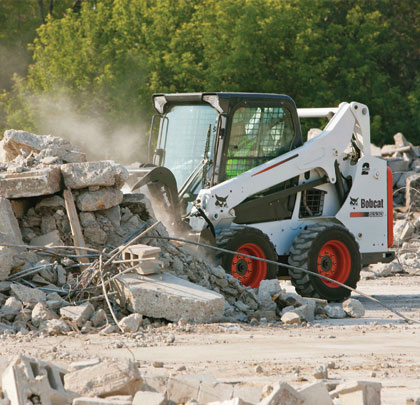Not long ago, purchasing compact equipment wasn’t financially viable for a number of construction contractors. Commercial and residential projects dried up, cash reserves were thin, and equipment loans were difficult—if not impossible—to secure. Rental answered a very critical need, and it proved its value again as one of the first industry segments to bounce back from the recession.
However, a fleet expansion decision takes careful consideration and planning. While rental remains a strong alternative to ownership, an improving economy is helping contractors gain the confidence to buy compact equipment again. Rental and acquisition strategies each offer unique benefits for different stages in an operation’s lifecycle, and both are demonstrating positive trends.
As you evaluate where your business and equipment needs stand today with where you want to be positioned in the future, it’s important to weigh your options by looking at considerations such as jobsite factors, machine size, attachment versatility, and capital resources.
JOBSITE FACTORS
When trying to make a decision about how to add a compact track loader, skid steer loader, or compact excavator to your fleet, manufacturers typically recommend starting with the scope of work. Is there an expectation that the length of a contract and the volume of work will sustain a commitment to a long-term purchase that would be better served with an acquisition? Perhaps the need for a machine or attachment is based on a relatively short-term project and it’s most feasible to pay only the fees associated with a rental arrangement?
Mike Fitzgerald, loader product specialist with Bobcat Company, points out that the economy is directly impacting the rental or purchase decision in another way. In the boom days before the recession, many contractors had larger projects, as developers ramped up residential and commercial construction, road building, and mall projects. It was easy to take on larger jobs that subsequently needed larger equipment, but changing project tasks can routinely dictate the need for a different size of machine.
Jobsite conditions may provide the most compelling reason to rent or own. Perhaps you’re a contractor who performs site prep and finish work on roadways and paving projects using skid steer loaders, but you won a bid for a project in different terrain. If the ground is going to be softer, muddier, or sandier, it might be the time to consider renting a compact track loader. Likewise, a construction company that regularly does dirt work and owns a track loader may have a contract on a solid surface where a skid steer loader may be more conducive to productivity.
Certain construction applications provide equipment owners more confidence that a compact track loader, skid steer loader or compact excavator will be used to its maximum capacity for the life of the unit. For instance, municipalities, builders, road building, and repair crews and excavation/grading/site developers typically find it easier to purchase a loader because they have established loading and digging needs and project patterns that dictate having a machine on a continual basis.
A general construction contractor may be clearing and prepping a jobsite one week, installing utilities another week, and moving pallets of materials on a daily basis. Although utilization is more varied and somewhat less predictable in some construction applications, tracking a machine’s usage and demand between multiple jobsites may reveal justification for purchasing to meet long-term needs.
CAPITAL RESOURCES
Determining the right time to rent or to buy is a business decision—one that is based on overall equipment needs, cash flow, cash reserves, and the availability of financing tools from manufacturers or conventional lending institutions.
Economic forces continue to play a key role in a company’s equipment evaluation. Capital is not as easy to secure as it was before the recession. Projects are not as large, nor as plentiful, as before when contractors were more risk-tolerant. These conditions have escalated a hybrid approach to equipment that lets contractors test the purchasing waters. Industry experts are seeing a growing interest in rent-to-purchase option agreements (RPOs). This acquisition strategy allows contractors to allocate a portion of a rental fee toward purchasing a machine, or return it at the end of the rental period.
Without question, purchasing a machine carries a greater commitment that typically includes insurance, taxes, licenses, registration, maintenance, operating expenses, and transportation fees. Depending on a contractor’s financial position, it may be difficult for them to justify this total cost of ownership compared to a flat monthly rental rate for a machine that is delivered to a jobsite.
A company’s tax implications must also be scrutinized. “Always consult your financial advisor or tax professional to determine if a purchase is a smart decision. While you can deduct rental payments as a business expense on tax returns, there could be tax incentives for purchases, such as advanced depreciation,” Fitzgerald says.
As you can see, the decision to buy or rent is entirely dependent upon your company’s situation. The most important thing is to take the time necessary to fully evaluate these and any other associated considerations. The pace of business is picking up and changing daily. You might be surprised to learn that what you decide for a project may change before the job is done. ■
For More Information:
Article supplied by Bobcat Company headquartered in West Fargo, North Dakota. For more information, visit www.bobcat.com.
_________________________________________________________________________
Modern Contractor Solutions, September 2013
Did you enjoy this article?
Subscribe to the FREE Digital Edition of Modern Contractor Solutions magazine.

When to Rent, When to Buy


